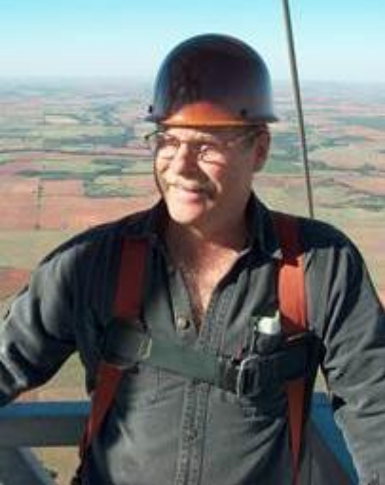The Tiger Mountain Antenna Fire

[November 2018] Early this month a fire at the Tiger Mountain broadcast site destroyed the antenna for six Seattle market FM’s.ERI sent a two-man crew to inspect the damaged antenna. This is the report on the incident from ERI President Tom Silliman.
November 20, 2018
The ERI team has returned from Seattle where they measured the damaged antenna, surveyed the site, climbed the tower, opened various components on the tower, and put pressure caps on the two 6-1/8 fifty Ohm rigid coaxial feed lines feeding the antenna.
The antenna has been in service at the Tiger Mountain American Tower facility for nineteen years. The antenna is fed with two feed lines. One feeds the lower four levels of the array, and the other feeds the upper four levels of the antenna. The return loss from the upper four bays of the array was very good, but the crew did observe heat damage inside some of the components of the lower half of the array.
The antenna elements have two 1 5/8 inch coaxial inputs that feed two 180 degree baluns, and the two antenna inputs are fed with the outputs of a hybrid. This results in four feeds to the four driven monopole elements attached to the fiberglass insulator on each driven element. Each array element has plastic radomes on each of the four monopole radiators attached to the element. Each of the four radomes on each radiating antenna element have custom brackets that attach the radome to the antenna reflector screens.
The four monopole radiating elements attached to each antenna element in the array are attached to the element insulator with a brass bolt that is welded to the monopole and extends through the element fiberglass insulator where there is an “O” ring, a large nut, and an attachment point for a feed strap to connect each monopole to one of the four balun outputs. The fiberglass insulator is pressurized.
I have outlined the cause of this tragic antenna failure below.
- Due to storm damage or vibration, one of the brass bolts welded to one of the monopole radiating elements in the upper half of the array broke in half inside of the fiberglass insulator. This radiating element did not fall to the ground when the bolt broke because the radiating element was inside the plastic radome, and the plastic radome was attached to the reflector screen holding the element and plastic radome in place.
- Now, the one port of the balun started arcing across the broken bolt causing the metal of the bolt to melt on both sides of the gap where the bolt broke. The feed point of the monopole has a low impedance thus causing the arc to begin.
- As the arcing continued, the arcing began to make the hole in the fiberglass insulator bigger and bigger with time until the hole allowed the arc to catch the plastic radome on fire.
- As this plastic radome began to burn, melted plastic began dripping down on other plastic radomes causing the fire to spread.
- Finally, the plastic radome holding the monopole in place was melted away enough to allow the monopole with the broken bolt to fall to the ground.
- Both the element on the ground and what was left of the feed inside the element insulator had melted metal ends.
Looking for the Main Cause
The initial symptom of this failure was the pressure loss.
This site is a mountain site where site access this time of year can be very difficult. If the antenna is refurbished, we will use a new radome design using flame retarding plastic radomes, and we will upgrade the antenna to our current improved panel antenna design.
Modern system monitoring available today can monitor everything including system pressure and pressure system run times, but with a site like Tiger Mountain that is difficult to get to, one would likely not have had the time to get to the site, find the problem, and avoid the fire.
ERI has many FM multiplex facilities all over the United States, many of which are on American Tower sites. We have three multiplex systems on the Empire State Building, the first one going on the air with twelve stations in 1994. We have two multiplex systems on the Prudential Building in Boston, the first one going on the air in 1990. Our antennas are known for their robust performance offering FM Radio Stations trouble free service in all weather conditions.
A future radome fire on the tower on Tiger Mountain shouldn’t be possible with a modified ERI panel with fire retarding plastic radomes and elements upgraded to our current 1180 panel antenna design.
– – –
Thomas B. Silliman, PE
President
Electronics Research, Inc.
7777 Gardner Road
Chandler, Indiana 47610
